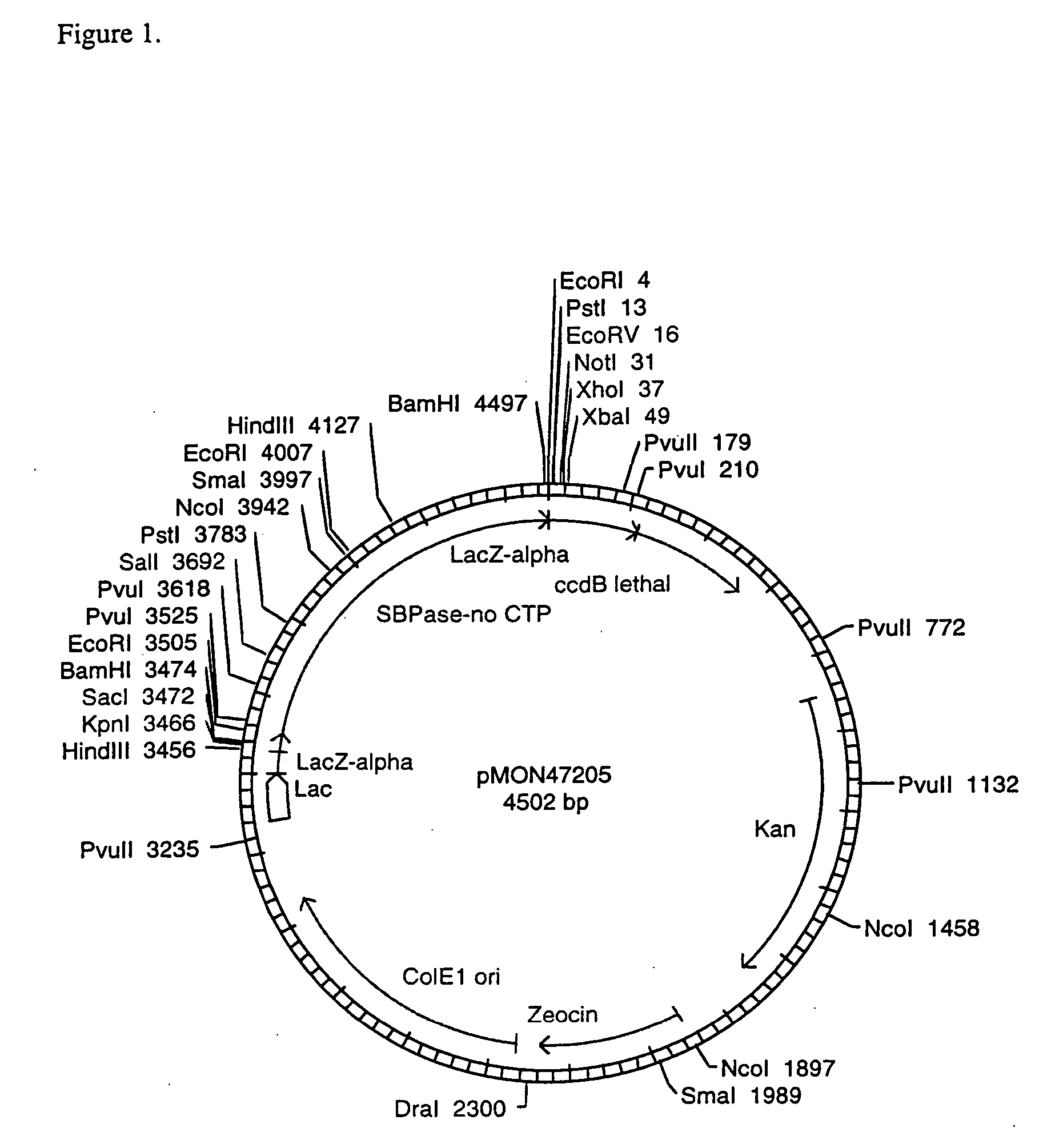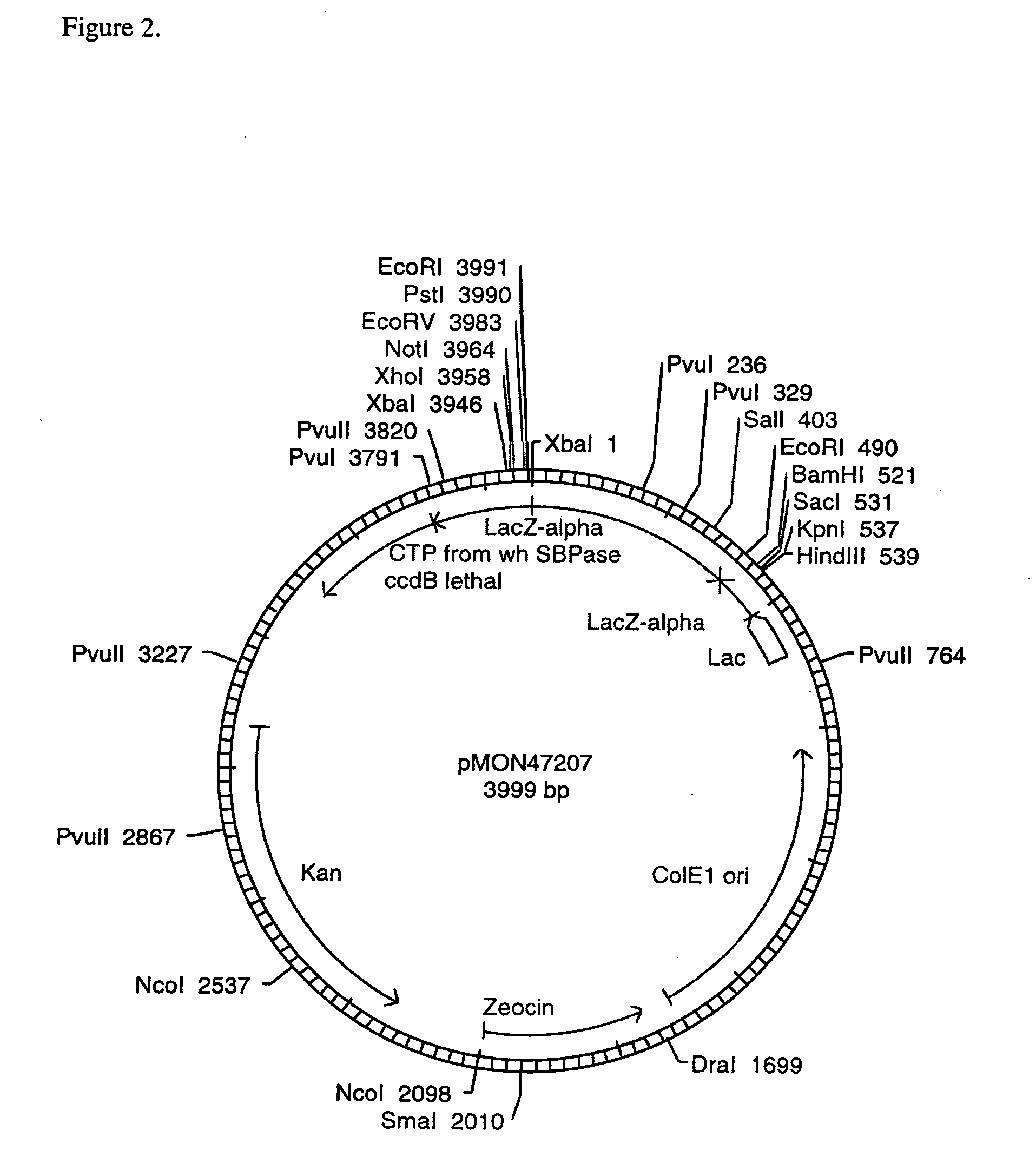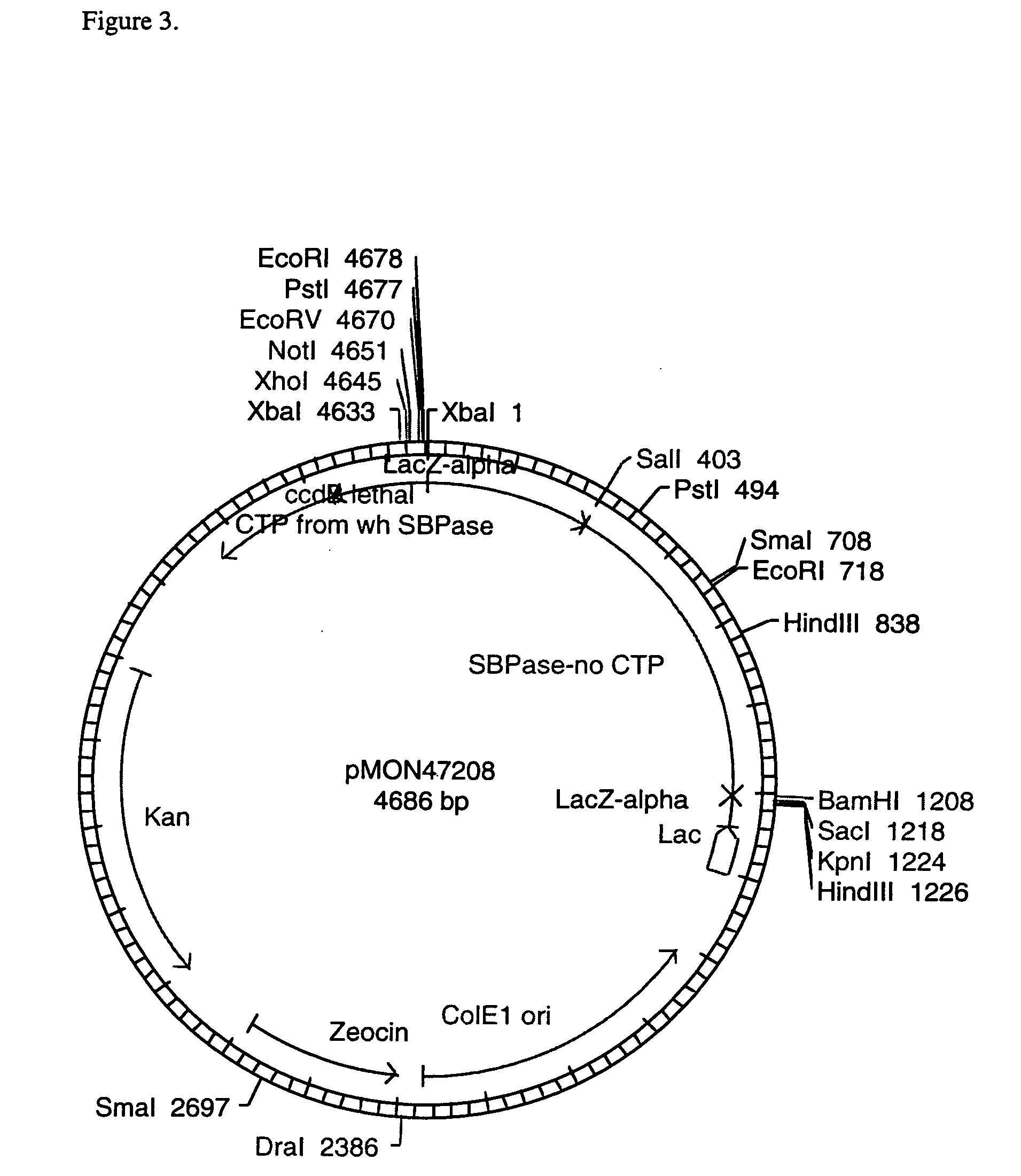Expression of sedoheptulose 1,7 bisphosphatase in transgenic plants
a technology of sedoheptulose and transgenic plants, which is applied in the field of sedoheptulose 1, 7 bisphosphatase (sbpase), can solve the problems of reducing growth rate, reducing carbon assimilation level, and sbpase being a potential rate-limiting step in carbohydrate metabolism, so as to improve the assimilation of carbon in plants
- Summary
- Abstract
- Description
- Claims
- Application Information
AI Technical Summary
Benefits of technology
Problems solved by technology
Method used
Image
Examples
example 1
[0101] cDNA Cloning and Overexpression of SBPase for Antibody Production
[0102] To isolate the region of the gene encoding the mature SBPase protein (no CTP), an RT-PCR reaction was performed. One microgram of Triticum aestivum, CV OSLO leaf RNA was combined with 100 pmol of random hexamer primers (BRULife Technologies Inc, Gaithersburg, Md.) or with 100 pmol of oligo dT primer (Promega, Madison, Wis.), heated for 5 minutes at 75° C., and chilled on ice. First strand cDNA synthesis was performed using Superscript II™ reverse transcriptase (BRL / Life Technologies Inc, Gaithersburg, Md.) according to the manufacturer's protocol. The terminated reverse transcription reaction was diluted 1:7. Three microliters of the diluted first strand synthesis products were combined with 100 μM of each dNTP, 50 pmol of a gene specific primer with homology to the 5′ end of the gene designed to generate an NdeI cleavage site for subcloning purposes (5′-ACATATGTGCGCGATCGGCGA-3′, SEQ ID NO: 1), 50 pmol o...
example 2
[0104] cDNA Cloning of SBPase for Expression in Plants
[0105] To clone the region of the SBPase gene encoding the chloroplast transit peptide, a modified anchored PCR procedure for the rapid amplification of cDNA ends (Frohman, 1990; Jain et al., 1992) was used. Eight hundred nanograms of total RNA was combined with 10 ng of a gene-specific primer (5′-TTCCTCAGAGCACGCGTACTTG-3′, SEQ ID NO: 4),heated to 75° C. for 5 minutes, and chilled on ice. First strand DNA synthesis was performed using Superscript II™ reverse ranscriptase (BRL / Life Technologies Inc, Gaithersburg, Md.) according to the supplier's protocol. The terminated reverse transcription reaction was treated with one unit of ribonuclease H for 20 minutes at 37° C., 5 minutes at 95° C., and chilled on ice. Excess primers and dNTPs were removed by centrifugation at 2,000×g through an Ultrafree-MC filterfuge (30,000 MW cutoff, Millipore, Bedford, Mass.), and the retentate was concentrated to 15 μL on a Savant Speedvac (Savant In...
example 3
[0107] Transient Expression of Maize Protoplasts
[0108] In order to test the expression of the wheat SBPase subunits and their assembly into active enzymes, vectors were constructed to contain the CaMV E35S promoter, the coding sequence for the entire SBPase protein including the CTP, the NOS 3′ termination signal, and ampicillin resistance for selection in E. coli. The SBPase gene was isolated as an XbaI-BamHI fragment from pMON47200. The SBPase gene was ligated into the XbaI-BamHI CaMV E35S, NOS 3′ bearing region of pMON999 (FIG. 6) to give pMON47203 (FIG. 7). The DNA constructs were electroporated into maize protoplasts according to the method of Sheen et al. (1991).
PUM
| Property | Measurement | Unit |
|---|---|---|
| Fraction | aaaaa | aaaaa |
| Acidity | aaaaa | aaaaa |
| Nucleic acid sequence | aaaaa | aaaaa |
Abstract
Description
Claims
Application Information
 Login to View More
Login to View More - R&D
- Intellectual Property
- Life Sciences
- Materials
- Tech Scout
- Unparalleled Data Quality
- Higher Quality Content
- 60% Fewer Hallucinations
Browse by: Latest US Patents, China's latest patents, Technical Efficacy Thesaurus, Application Domain, Technology Topic, Popular Technical Reports.
© 2025 PatSnap. All rights reserved.Legal|Privacy policy|Modern Slavery Act Transparency Statement|Sitemap|About US| Contact US: help@patsnap.com



